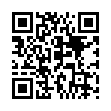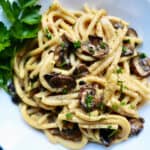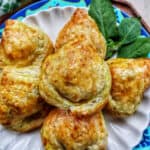Unusual syndrome caused by Christmas tree threatens Aussies
By
- Replies 5
It’s that time of year again. As Australians prepare for the busy festive season, streets are lightened up, decorations are hung, and Christmas trees of choice are being set up to add a little extra cheer to houses Down Under.
But as people put up their trees, health officials across Australia warn people to be aware of the little-known danger that comes with any kind of Christmas tree—real or fake.
It's the potentially serious threat of the so-called 'Christmas Tree Syndrome', an allergic reaction that can occur when trees are brought inside the home or unpacked from dusty storage areas.
With the condition estimated to affect some six per cent of the population, particularly those with allergies and existing asthma conditions, it’s something many, seniors in particular, should definitely be aware of.
Real Christmas Tree Syndrome
National Asthma Council Australia’s Professor Sheryl van Nunen explains that real Christmas trees—usually varieties of pine and cypress—may trap high amounts of pollen before they’re cut. So, when they’re dried out and arrive in your home, they release the pollen into the air.
One study also found that around 50 kinds of mould were present in Christmas tree samples tested.
'The pollen and mould can cause "Christmas tree syndrome", which can trigger asthma and hay fever symptoms and causes wheezing, sneezing, and disrupted sleep, and potential severe asthma attacks', Professor van Nunen said in a statement.
If you have dust mite allergies, asthma, hay fever, or any other kind of existing allergies, you should be cautious when getting a real Christmas tree.
But if you plan on getting a real one this year, make sure you give it a thorough rinse, and cut 2.5 cm from the bottom so they can be watered and not dried out.
Don’t worry—that doesn’t mean you have to miss out on the Christmas tree tradition altogether.
Artificial trees as an alternative
Artificial trees can be a safe alternative, but you should take the necessary precautions to ensure they are free from dust and mould, as these can accumulate over time.
‘Even the most exciting part of the Christmas tree tradition—decorating—can put you at risk too if festive decorations have become dusty in storage,’ Professor van Nunen said.
‘You can reduce the risks by simply hosing off the tree before you bring it in the house and letting it dry, as you will greatly reduce the amount of pollen and dust.’
For artificial trees, pack the tree and decorations outside the house and vacuum them as soon as you can, you must also give it ‘a good shake’ before placing them inside, she continued.
Finally, be aware of the risks of having a Christmas tree inside your home. Even if you’re not at risk, it’s always better to be safe than sorry, so it's best to look out for signs of wheezing, sneezing, and other allergies.
In cases of medical emergencies, don’t hesitate to call 000.

To learn more about Christmas Tree Syndrome, you can visit the National Asthma Council Australia website.
What do you think of this story? Do you have other tips to protect your Christmas tree from allergens? Let us know in the comments below!
But as people put up their trees, health officials across Australia warn people to be aware of the little-known danger that comes with any kind of Christmas tree—real or fake.
It's the potentially serious threat of the so-called 'Christmas Tree Syndrome', an allergic reaction that can occur when trees are brought inside the home or unpacked from dusty storage areas.
With the condition estimated to affect some six per cent of the population, particularly those with allergies and existing asthma conditions, it’s something many, seniors in particular, should definitely be aware of.
Real Christmas Tree Syndrome
National Asthma Council Australia’s Professor Sheryl van Nunen explains that real Christmas trees—usually varieties of pine and cypress—may trap high amounts of pollen before they’re cut. So, when they’re dried out and arrive in your home, they release the pollen into the air.
One study also found that around 50 kinds of mould were present in Christmas tree samples tested.
'The pollen and mould can cause "Christmas tree syndrome", which can trigger asthma and hay fever symptoms and causes wheezing, sneezing, and disrupted sleep, and potential severe asthma attacks', Professor van Nunen said in a statement.
If you have dust mite allergies, asthma, hay fever, or any other kind of existing allergies, you should be cautious when getting a real Christmas tree.
But if you plan on getting a real one this year, make sure you give it a thorough rinse, and cut 2.5 cm from the bottom so they can be watered and not dried out.
Don’t worry—that doesn’t mean you have to miss out on the Christmas tree tradition altogether.
Artificial trees as an alternative
Artificial trees can be a safe alternative, but you should take the necessary precautions to ensure they are free from dust and mould, as these can accumulate over time.
‘Even the most exciting part of the Christmas tree tradition—decorating—can put you at risk too if festive decorations have become dusty in storage,’ Professor van Nunen said.
‘You can reduce the risks by simply hosing off the tree before you bring it in the house and letting it dry, as you will greatly reduce the amount of pollen and dust.’
For artificial trees, pack the tree and decorations outside the house and vacuum them as soon as you can, you must also give it ‘a good shake’ before placing them inside, she continued.
Finally, be aware of the risks of having a Christmas tree inside your home. Even if you’re not at risk, it’s always better to be safe than sorry, so it's best to look out for signs of wheezing, sneezing, and other allergies.
In cases of medical emergencies, don’t hesitate to call 000.
Key Takeaways
- Health officials are warning Australians about the dangers associated with Christmas trees, specifically 'Christmas Tree syndrome'. This allergic reaction can cause various symptoms, such as wheezing, sneezing, coughs, and sore eyes.
- The syndrome is estimated to affect about six per cent of the population, particularly those with allergies and existing asthma conditions.
- Both real and artificial trees pose dangers. Real trees can trap and release high amounts of pollen, while artificial trees can accumulate dust or mould over time, both triggering allergic reactions.
- Professor Sheryl van Nunen from the National Asthma Council Australia recommends reducing risks by washing down real and artificial trees before bringing them indoors and unpacking and vacuuming all decorations outdoors to remove any dust.
To learn more about Christmas Tree Syndrome, you can visit the National Asthma Council Australia website.
What do you think of this story? Do you have other tips to protect your Christmas tree from allergens? Let us know in the comments below!








